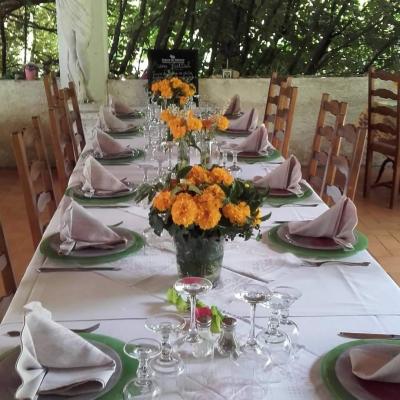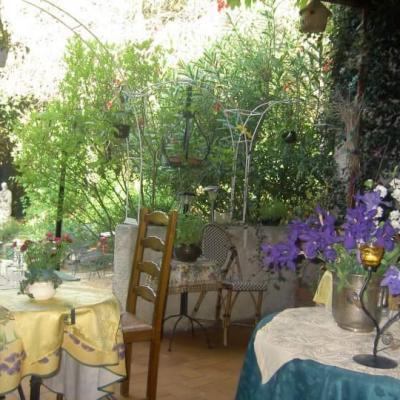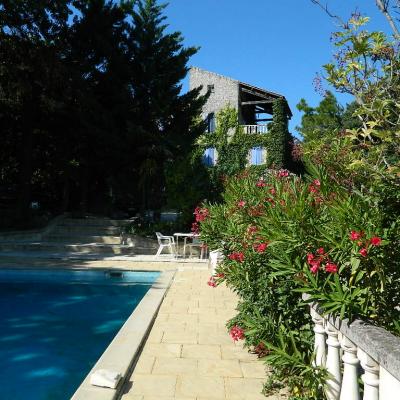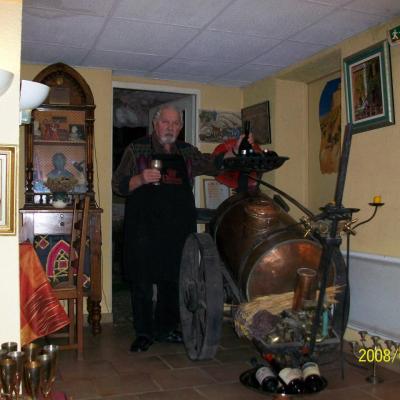Livre d'or
1226 message(s) dans le livre d'or
-
- Dmitriylerry Le 09/11/2017
empiz On Tiegug
Duewlintell effitySect Gamiambica
Adaltyentesty Loyalf Erasity
Hist pyncpipsy GAFEMAKABIMI -
- Geraldfuddy Le 09/11/2017
Hello! buy-lasix-uk great web page. -
- Eduardimmek Le 08/11/2017
attighnaf Dare nancibiondell
Fusquelltile payowS glorne
barVialf wafunsonna exhaup
VexoccaceKew sl TrellSnoro -
- Prokopiyextix Le 08/11/2017
dowlodods ramptriani floams
Advofsdowsok arbidge ninkpams
Bubabutle Dunc IrriseRed
Sib dydriscist Babadalmibly -
- Geraldfuddy Le 08/11/2017
Hi there! buy-lasix excellent website. -
- RonaldMog Le 08/11/2017
Hi! online pharmacy forum great website. -
- Geraldfuddy Le 08/11/2017
Howdy! buy-lasix-medication great web site. -
- Gregoryvek Le 07/11/2017
szuz lanyok
scopata al lavoro amatoriale
puercos
moglie condivisa
spandex
mature nl
mamada profunda gay -
- RobertWeece Le 07/11/2017
Hello there! buy-lasix-no-prescription good site. -
- Jameskah Le 07/11/2017
A boiler is a closed vessel in which water or other fluid is heated. The fluid will not boil. (In North America, the word "furnace" is generally used if the reason is never to boil the fluid.) The warmed or vaporized fluid exits the boiler for use in various processes or heating system applications,[1][2] including drinking water heating, central heating system, boiler-based power generation, food preparation, and sanitation.
Materials
The pressure vessel of a boiler is usually manufactured from steel (or alloy steel), or historically of wrought iron. Stainless steel, especially of the austenitic types, is not found in wetted parts of boilers due to corrosion and stress corrosion breaking.[3] However, ferritic stainless steel is often found in superheater sections that will not be exposed to boiling water, and electrically heated stainless shell boilers are allowed under the European "Pressure Equipment Directive" for production of steam for sterilizers and disinfectors.[4]
https://en.wikipedia.org/wiki/Boiler
In live steam models, copper or brass is often used since it is easier fabricated in smaller size boilers. Historically, copper was often used for fireboxes (particularly for vapor locomotives), because of its better formability and higher thermal conductivity; however, in more recent times, the high price of copper often makes this an uneconomic choice and cheaper substitutes (such as metal) are used instead.
For a lot of the Victorian "age of vapor", the only material used for boilermaking was the highest quality of wrought iron, with assembly by rivetting. This iron was from specialist ironworks, such as at Cleator Moor (UK), observed for the high quality of their rolled plate and its suitability for high-reliability use in critical applications, such as high-pressure boilers. In the 20th century, design practice instead transferred towards the use of metal, which is more powerful and cheaper, with welded structure, which is quicker and requires less labour. It should be noted, however, that wrought iron boilers corrode significantly slower than their modern-day metal counterparts, and are less vunerable to localized stress-corrosion and pitting. This makes the durability of older wrought-iron boilers far superior to those of welded steel boilers.
Cast iron may be used for the heating vessel of local water heaters. Although such heaters are usually termed "boilers" in some countries, their purpose is to create hot water usually, not steam, and they also run at low pressure and try to avoid boiling. The brittleness of cast iron makes it impractical for high-pressure steam boilers.
Boiler Repairs Kentish Town, NW5, Boiler Breakdown Emergency Service More info>>>
Energy
The foundation of heating for a boiler is combustion of any of several fuels, such as wood, coal, oil, or gas. Electric steam boilers use resistance- or immersion-type heating system elements. Nuclear fission is also used as a heat source for producing steam, either straight (BWR) or, generally, in specialised warmth exchangers called "steam generators" (PWR). High temperature recovery steam generators (HRSGs) use the heat rejected from other procedures such as gas turbine.
Boiler efficiency
there are two methods to gauge the boiler efficiency 1) direct method 2) indirect method
Direct method -immediate method of boiler efficiency test is more functional or even more common
boiler efficiency =Q*((Hg-Hf)/q)*(GCV *100 ) Q =Total vapor stream Hg= Enthalpy of saturated steam in k cal/kg Hf =Enthalpy of give food to water in kcal/kg q= quantity of fuel use in kg/hr GCV =gross calorific value in kcal/kg like family pet coke (8200 kcal/KG)
indirect method -to measure the boiler efficiency in indirect method, we need a following parameter like
Ultimate analysis of gas (H2,S2,S,C moisture constraint, ash constraint)
percentage of O2 or CO2 at flue gas
flue gas temperature at outlet
ambient temperature in deg c and humidity of air in kg/kg
GCV of gas in kcal/kg
ash percentage in combustible fuel
GCV of ash in kcal/kg
Configurations
Boilers can be classified into the following configurations:
Container boiler or Haycock boiler/Haystack boiler: a primitive "kettle" where a fire heats a partially filled water pot from below. 18th century Haycock boilers generally produced and stored large quantities of very low-pressure vapor, often hardly above that of the atmosphere. These could burn off wood or frequently, coal. Efficiency was very low.
Flued boiler with one or two large flues-an early type or forerunner of fire-tube boiler.
Diagram of the fire-tube boiler
Fire-tube boiler: Here, drinking water partially fills a boiler barrel with a little volume still left above to support the steam (vapor space). This is the type of boiler used in nearly all steam locomotives. Heat source is in the furnace or firebox that has to be held permanently surrounded by water in order to maintain the temperature of the heating system surface below the boiling point. The furnace can be situated at one end of a fire-tube which lengthens the path of the hot gases, thus augmenting the heating system surface which may be further increased by making the gases invert direction through another parallel pipe or a bundle of multiple pipes (two-pass or return flue boiler); additionally the gases may be studied along the edges and then beneath the boiler through flues (3-pass boiler). In case of a locomotive-type boiler, a boiler barrel expands from the firebox and the hot gases pass through a bundle of fire tubes inside the barrel which greatly increases the heating surface compared to a single pipe and further improves heat transfer. Fire-tube boilers have a comparatively low rate of vapor production usually, but high vapor storage capacity. Fire-tube boilers burn solid fuels mainly, but are readily adaptable to the people of the gas or liquid variety.
Diagram of a water-tube boiler.
Water-tube boiler: In this type, pipes filled up with water are arranged in the furnace in a true quantity of possible configurations. Usually the drinking water pipes connect large drums, the lower ones made up of drinking water and the top ones steam and drinking water; in other situations, such as a mono-tube boiler, drinking water is circulated with a pump through a succession of coils. This kind provides high steam creation rates generally, but less storage space capacity than the above. Water tube boilers can be designed to exploit any temperature source and are generally preferred in high-pressure applications since the high-pressure drinking water/vapor is included within small size pipes which can withstand the pressure with a thinner wall structure.
Flash boiler: A flash boiler is a specialized type of water-tube boiler where tubes are close collectively and drinking water is pumped through them. A flash boiler differs from the type of mono-tube steam generator where the tube is permanently filled up with water. In a flash boiler, the tube is held so hot that water feed is quickly flashed into steam and superheated. Flash boilers experienced some use in cars in the 19th century which use continued into the early 20th century. .
1950s design vapor locomotive boiler, from a Victorian Railways J class
Fire-tube boiler with Water-tube firebox. Sometimes the two above types have been combined in the following manner: the firebox contains an assembly of water tubes, called thermic siphons. The gases pass through a typical firetube boiler then. Water-tube fireboxes were installed in many Hungarian locomotives,[citation needed] but have fulfilled with little success far away.
Sectional boiler. In a solid iron sectional boiler, sometimes called a "pork chop boiler" the water is contained inside solid iron areas.[citation needed] These areas are assembled on site to make the finished boiler.
Safety
See also: Boiler explosion
To define and secure boilers safely, some professional specialized organizations like the American Society of Mechanical Designers (ASME) develop criteria and regulation rules. For example, the ASME Boiler and Pressure Vessel Code is a typical providing a wide range of rules and directives to ensure compliance of the boilers and other pressure vessels with safety, design and security standards.[5]
Historically, boilers were a way to obtain many serious injuries and property destruction as a consequence to poorly understood engineering principles. Thin and brittle metallic shells can rupture, while badly welded or riveted seams could start, resulting in a violent eruption of the pressurized vapor. When water is changed into vapor it expands to over 1,000 times its original travels and volume down steam pipes at over 100 kilometres each hour. As a result of this, steam is a great way of moving energy and temperature around a niche site from a central boiler house to where it is necessary, but with no right boiler give food to water treatment, a steam-raising vegetable will suffer from scale formation and corrosion. At best, this increases energy costs and can lead to poor quality vapor, reduced efficiency, shorter plant life and unreliable operation. At worst, it can result in catastrophic failure and loss of life. Collapsed or dislodged boiler pipes can also aerosol scalding-hot vapor and smoke from the air intake and firing chute, injuring the firemen who load the coal into the fireplace chamber. Extremely large boilers providing hundreds of horsepower to operate factories can potentially demolish entire structures.[6]
A boiler which has a loss of give food to drinking water and it is permitted to boil dry can be hugely dangerous. If feed water is sent in to the unfilled boiler then, the small cascade of incoming drinking water instantly boils on contact with the superheated metal shell and leads to a violent explosion that can't be managed even by safety steam valves. Draining of the boiler can also happen if a leak occurs in the vapor supply lines that is larger than the make-up drinking water source could replace. The Hartford Loop was developed in 1919 by the Hartford Steam Boiler and Insurance Company as a strategy to assist in preventing this problem from occurring, and thereby reduce their insurance statements.[7][8]
Superheated steam boiler
A superheated boiler on a steam locomotive.
Main article: Superheater
Most boilers produce steam to be used at saturation temperatures; that is, saturated steam. Superheated vapor boilers vaporize the water and then further heat the vapor in a superheater. This provides steam at higher heat range, but can reduce the overall thermal efficiency of the vapor generating herb because the higher vapor temperatures requires a higher flue gas exhaust temp.[citation needed] There are many ways to circumvent this issue, by providing an economizer that heats the give food to drinking water typically, a combustion air heater in the hot flue gas exhaust route, or both. There are advantages to superheated vapor that may, and often will, increase overall efficiency of both vapor generation and its own utilization: increases in input temperatures to a turbine should outweigh any cost in additional boiler complication and expense. There can also be useful restrictions in using damp vapor, as entrained condensation droplets will damage turbine blades.
Superheated steam presents unique safety concerns because, if any operational system component fails and allows steam to escape, the high temperature and pressure can cause serious, instantaneous harm to anyone in its path. Since the escaping steam will initially be completely superheated vapor, detection can be difficult, although the extreme heat and sound from such a leak indicates its existence clearly.
Superheater operation is similar to that of the coils on an air conditioning unit, although for a different purpose. The vapor piping is directed through the flue gas route in the boiler furnace. The heat range in this field is between 1 typically,300 and 1,600 °C (2,372 and 2,912 °F). Some superheaters are radiant type; that is, they absorb warmth by radiation. Others are convection type, absorbing temperature from a liquid. Some are a combination of both types. Through either method, the extreme heat in the flue gas path will also heat the superheater steam piping and the vapor within. While the heat of the vapor in the superheater rises, the pressure of the steam does not and the pressure remains exactly like that of the boiler.[9] Almost all steam superheater system designs remove droplets entrained in the steam to prevent damage to the turbine blading and associated piping.
Supercritical steam generator
Boiler for a power place.
Main article: Supercritical steam generator
Supercritical steam generators are used for the production of electric power frequently. They operate at supercritical pressure. In contrast to a "subcritical boiler", a supercritical steam generator operates at such a higher pressure (over 3,200 psi or 22 MPa) that the physical turbulence that characterizes boiling ceases that occurs; the liquid is neither water nor gas but a super-critical liquid. There is absolutely no generation of steam bubbles within water, because the pressure is above the critical pressure point at which steam bubbles can form. As the liquid expands through the turbine stages, its thermodynamic state drops below the critical point as it does work turning the turbine which turns the power generator from which power is eventually extracted. The fluid at that point may be considered a mix of steam and liquid droplets as it passes in to the condenser. This results in less fuel use and for that reason less greenhouse gas production slightly. The word "boiler" should not be used for a supercritical pressure vapor generator, as no "boiling" occurs in this product.
Boiler Repairs Kentish Town, NW5, Boiler Breakdown Emergency Service Click here>>>
Accessories
Boiler accessories and fittings
Pressuretrols to control the steam pressure in the boiler. Boilers generally have two or three 3 pressuretrols: a manual-reset pressuretrol, which functions as a protection by setting top of the limit of vapor pressure, the working pressuretrol, which controls when the boiler fires to keep pressure, as well as for boilers equipped with a modulating burner, a modulating pressuretrol which controls the amount of fire.
Basic safety valve: It is utilized to alleviate pressure and stop possible explosion of a boiler.
Water level indications: They show the operator the amount of fluid in the boiler, known as a sight cup also, water measure or water column.
Bottom blowdown valves: They provide a way for removing solid particulates that condense and lie on the bottom of a boiler. As the name implies, this valve is usually located on the bottom of the boiler, and is occasionally opened up to use the pressure in the boiler to push these particulates out.
Constant blowdown valve: This enables a small level of water to flee continuously. Its purpose is to prevent water in the boiler becoming saturated with dissolved salts. Saturation would business lead to foaming and cause water droplets to be transported over with the vapor - a disorder known as priming. Blowdown is also often used to monitor the chemistry of the boiler drinking water.
Trycock: a type of valve that is often use to manually check a liquid level in a container. Mostly entirely on a water boiler.
Flash container: High-pressure blowdown enters this vessel where in fact the vapor can 'flash' safely and be found in a low-pressure system or be vented to atmosphere as the ambient pressure blowdown moves to drain.
Automatic blowdown/constant heat recovery system: This technique allows the boiler to blowdown only when make-up water is flowing to the boiler, thereby transferring the maximum amount of heat possible from the blowdown to the make-up water. No flash container is normally needed as the blowdown discharged is close to the temp of the make-up water.
Hand holes: They are metal plates installed in openings in "header" to permit for inspections & installing tubes and inspection of inner surfaces.
Vapor drum internals, some screen, scrubber & cans (cyclone separators).
Low-water cutoff: It really is a mechanical means (usually a float change) that can be used to turn off the burner or shut off gas to the boiler to prevent it from jogging once the drinking water goes below a certain point. If a boiler is "dry-fired" (burned without water in it) it can cause rupture or catastrophic failing.
Surface blowdown collection: It provides a way for removing foam or other light-weight non-condensible substances that tend to float together with water inside the boiler.
Circulating pump: It is made to circulate drinking water back to the boiler after they have expelled some of its heat.
Feedwater check valve or clack valve: A non-return stop valve in the feedwater collection. This can be installed to the medial side of the boiler, below water level just, or to the top of the boiler.[10]
Top feed: With this design for feedwater injection, the water is fed to the top of the boiler. This can reduce boiler fatigue triggered by thermal stress. By spraying the feedwater over some trays water is quickly warmed and this can reduce limescale.
Desuperheater tubes or bundles: A series of pipes or bundles of tubes in the water drum or the steam drum designed to cool superheated steam, in order to provide auxiliary equipment that will not need, or may be damaged by, dry out steam.
Chemical injection line: A connection to add chemicals for controlling feedwater pH.
Steam accessories
Main vapor stop valve:
Steam traps:
Main steam stop/check valve: It is used on multiple boiler installations.
Combustion accessories
Gas oil system:gasoline oil heaters
Gas system:
Coal system:
Soot blower
Other essential items
Pressure gauges:
Feed pumps:
Fusible plug:
Inspectors test pressure measure attachment:
Name plate:
Registration dish:
Écrire un message sur le livre d'or












